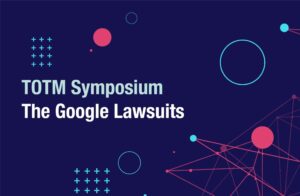Showing archive for: “Efficiencies”
Robert Gertner on Revising the Guidelines
The stated purpose of the DOJ/FTC Horizontal Merger Guidelines is to “reduce the uncertainty associated with enforcement of the antitrust laws.” The Guidelines have had limited success in achieving this goal. They generally succeed in two important dimensions and fail in one. First, the Guidelines lay out a five step analysis consisting of market definition, ... Robert Gertner on Revising the Guidelines
The Limits of Antitrust in the New Economy
Josh and I have just posted a draft of our new article, The Limits of Antitrust in the New Economy. We’ll be presenting it at the Searle Center Research Roundtable on the 25th Anniversary of Frank Easterbrook’s essential article, The Limits of Antitrust, next week. Here’s the abstract: This paper offers an opportunity to reflect ... The Limits of Antitrust in the New Economy
Welcome TOTM Guest Blogger Steven C. Salop
Steve Salop is a professor economics and law at the Georgetown University Law Center where he teaches antitrust law and economics and economic reasoning and the law. Steve’s work in antitrust economics pioneered what is now frequently referred to as the “Post-Chicago” approach. His research focuses on antitrust law and economics, and Steve has written ... Welcome TOTM Guest Blogger Steven C. Salop
Merger Guidelines Reading
Volume 16, Issue 4 of the George Mason Law Review (which I received in my mailbox today) has a well timed issue from its antitrust symposium featuring several articles on revisions to the Merger Guidelines. Especially recommended is DOJ economist Greg Werden’s article here, which usefully sets the stage for some of the important debates. ... Merger Guidelines Reading
Coming Soon: New Merger Guidelines
The possibility of new Merger Guidelines has been much discussed in the antitrust community, particularly in light of appointment of the two new chief agency economists, Carl Shapiro and Joe Farrell, who have done substantial work on the economics of horizontal mergers and market definition. Today, the FTC and DOJ announced a series of workshops ... Coming Soon: New Merger Guidelines
The New Issue of Antitrust Source
Is available here. In this issue Chris Sagers considers the future of Section 1 in light of the Supreme Court’s possible action in American Needle. Continuing our focus on China, this issue features an article by Nate Bush that examines merger enforcement activity under that country’s year-old Antimonopoly Law. Still on mergers, but on the ... The New Issue of Antitrust Source
Hylton, Manne and Wright in Forbes on Intel, Section 2 and Monopolization in the US
Available here. Here’s an excerpt: It turns out that it is a very difficult business to identify the few cases when low prices and aggressive competition might perversely end up harming consumers in the long run rather than simply making them better off. And the cost of erroneous antitrust enforcement, such as mistakenly condemning Intel’s ... Hylton, Manne and Wright in Forbes on Intel, Section 2 and Monopolization in the US
Section 2 Symposium: Josh Wright on An Evidence Based Approach to Exclusive Dealing and Loyalty Discounts
The primary anticompetitive concern with exclusive dealing contracts is that a monopolist might be able to utilize exclusivity to fortify its market position, raise rivals’ costs of distribution, and ultimately harm consumers. The unifying economic logic of these anticompetitive models of exclusivity is that the potential entrant (or current rival) must attract a sufficient mass ... Section 2 Symposium: Josh Wright on An Evidence Based Approach to Exclusive Dealing and Loyalty Discounts
Section 2 Symposium: Bruce Kobayashi on Are Administrable Bright Line Rules Underutilized in Section 2 Analyses?
One of the most important changes in the antitrust laws over the past 40 years has been the diminished reliance of rules of per se illegality in favor of a rule of reason analysis. With the Court’s recent rulings in Leegin (eliminating per se rule for minimum RPM) and Independent Ink (eliminating the per se ... Section 2 Symposium: Bruce Kobayashi on Are Administrable Bright Line Rules Underutilized in Section 2 Analyses?
Section 2 Symposium: Michael Salinger on Error Costs and the Case for Conduct-Specific Standards
The source of much of the disagreement between the Antitrust Division and the FTC is based on chapter 3, which discusses general standards for Section 2 liability. A major portion of chapter 3 concerns whether there is a unifying principle underlying appropriate doctrine for all behavior challenged under Section 2. A substantial portion of the ... Section 2 Symposium: Michael Salinger on Error Costs and the Case for Conduct-Specific Standards
Section 2 Symposium: David Evans–An Economist’s View
The treatment of unilateral conduct remains an intellectual and policy mess as we finish out the first decade of the 21st century. There were signs of hope a few years ago. The European Commission embarked on an effort to adopt an effects-based approach to unilateral conduct and to move away from the analytically-empty, object-based approach ... Section 2 Symposium: David Evans–An Economist’s View
Section 2 Symposium: Michael Salinger on Framing the Debate
Given the embarrassing outcome of the FTC/DOJ single-firm conduct hearings, it is worth revisiting what the organizers of the hearings were attempting to accomplish. The Federal Register notice announcing the hearings provides some key insights. It read, in part: The Agencies expect to focus on legal doctrines and jurisprudence, economic research, and business and consumer ... Section 2 Symposium: Michael Salinger on Framing the Debate





